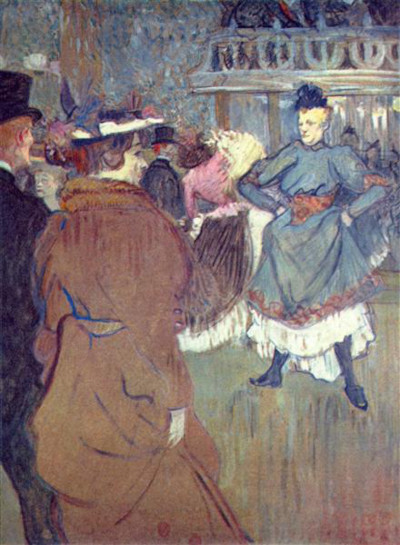The painting from 1892 captures The departure of the quadrille within a cabaret setting in the French capital, Paris. It is one of many artworks by the painter to have been produced in this environment.
This particular piece is sized at 80cm in height by 60.5cm in width. You will see a confrontation between a large woman to the right, who stands with a menancing stance, and a couple in the foreground. Being the theatrical world, this may have been an element of fun and acting, naturally. Many more figures are provided to the left hand side, with features of the building itself on display at the back. Toulouse-Lautrec tended to focus on particular individuals and then add the rest of the detail across each scene in a more relaxed manner. The lady nearest us is smartly dressed as she goes out for the evening. A long brown outfit is completed with a smart hat, and she walks, arm-in-arm, with her companion. He is in a black suit with matching top hat.
There is not a wealth of information available on this piece, though we already know much about his work on the Moulin Rouge through other artworks that have been researched in greater detail. The artist spend many evenings working in theatres, capturing the exciting events that would unfold. He felt comfortable within this environment and would often visit even when he was not painting. Sometimes he would also sit and sketch, before developing a piece at home in his studio. The illustration skills that he possessed would be put to good use in creating advertisement posters that would help drum up business for various events and shows, and his success brought in requests from other industries over time.
There would be countless examples of the Moulin Rouge within this artist's career, with that theme becoming the most famous theme within his output. Other items to be found included the likes of Moulin Rouge: La Goulue, At the Moulin Rouge, The Dance and In Salon of Rue des Moulins. There were many more beides, and he would also produce posters that could help promote some of the cabaret events going on around the city of Paris at that time. He loved the nightlife and could be himself during this part of the day, where society was more fun and less judgemental.




